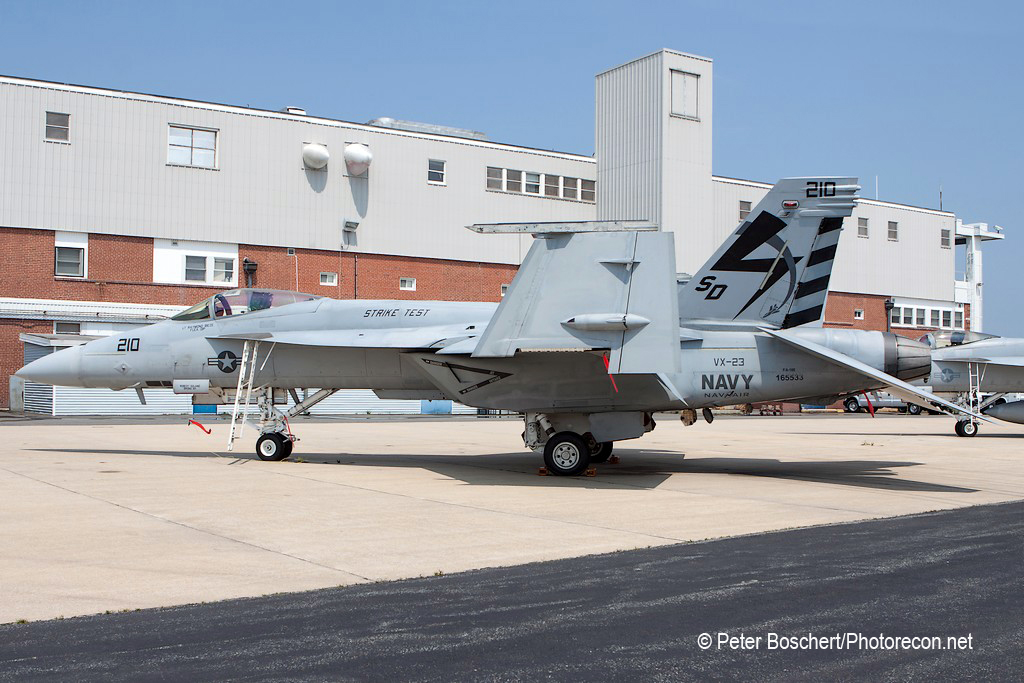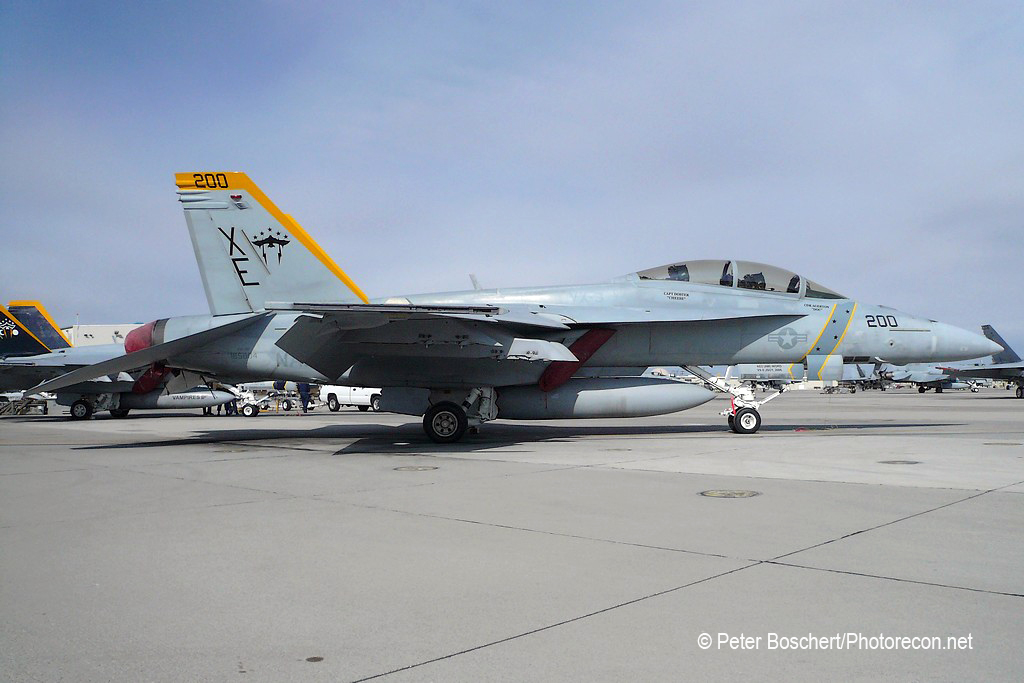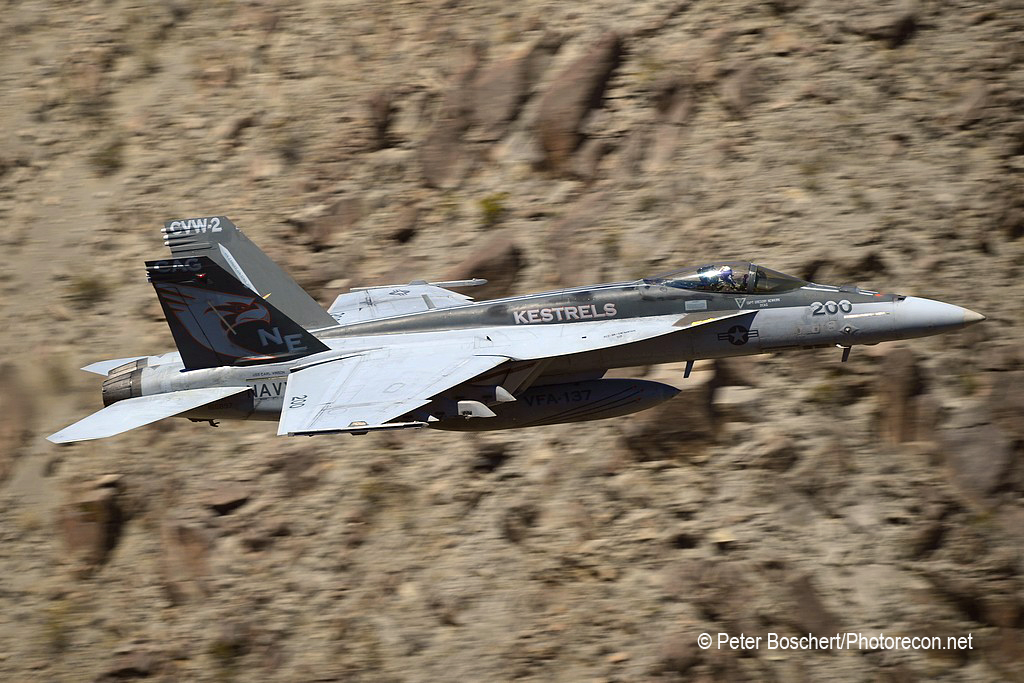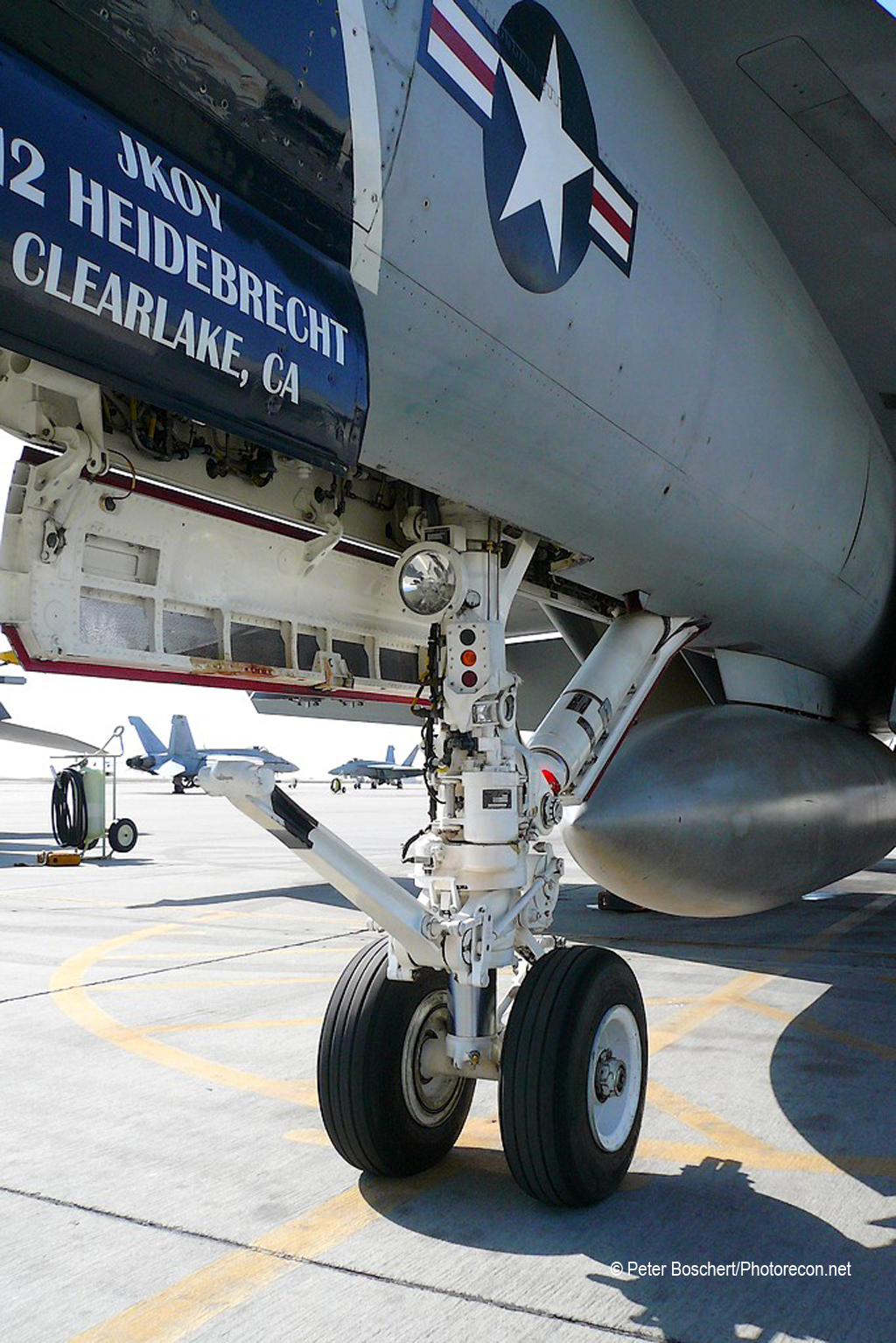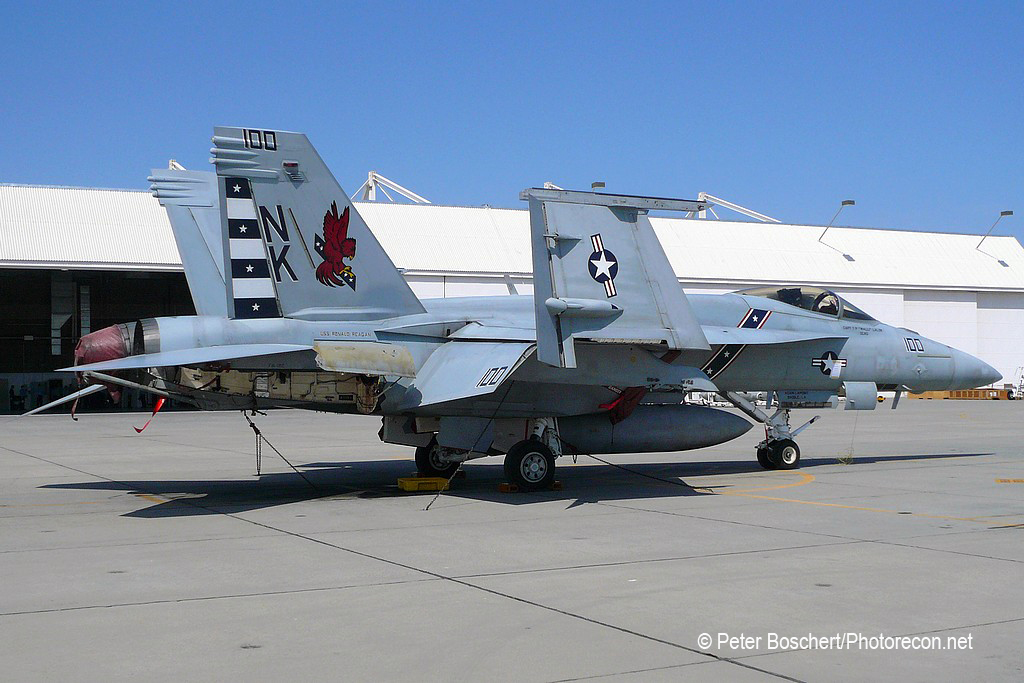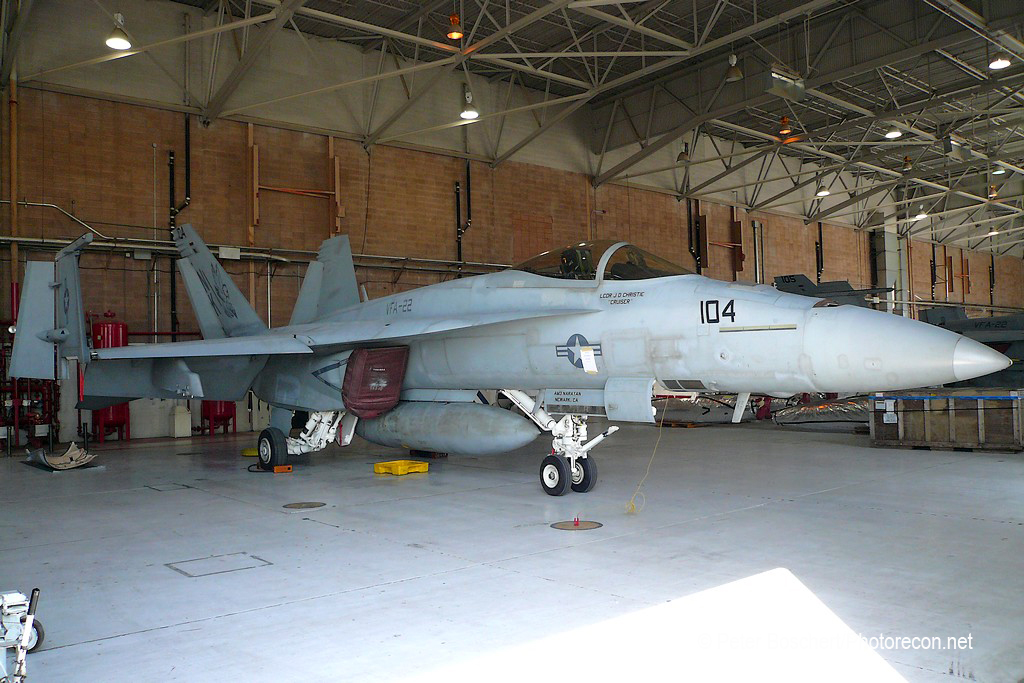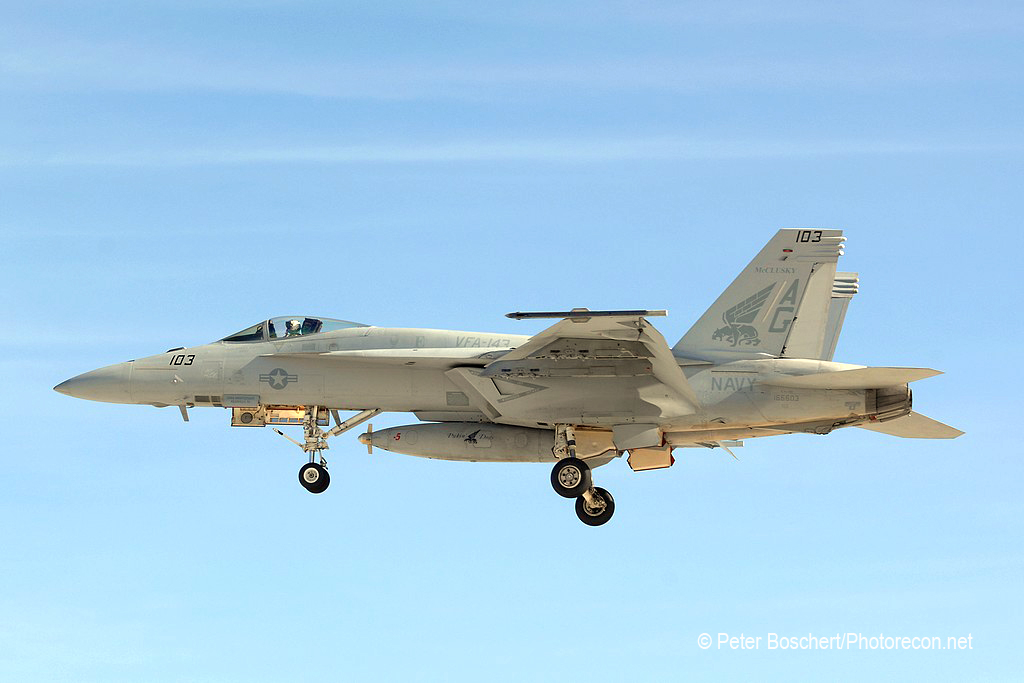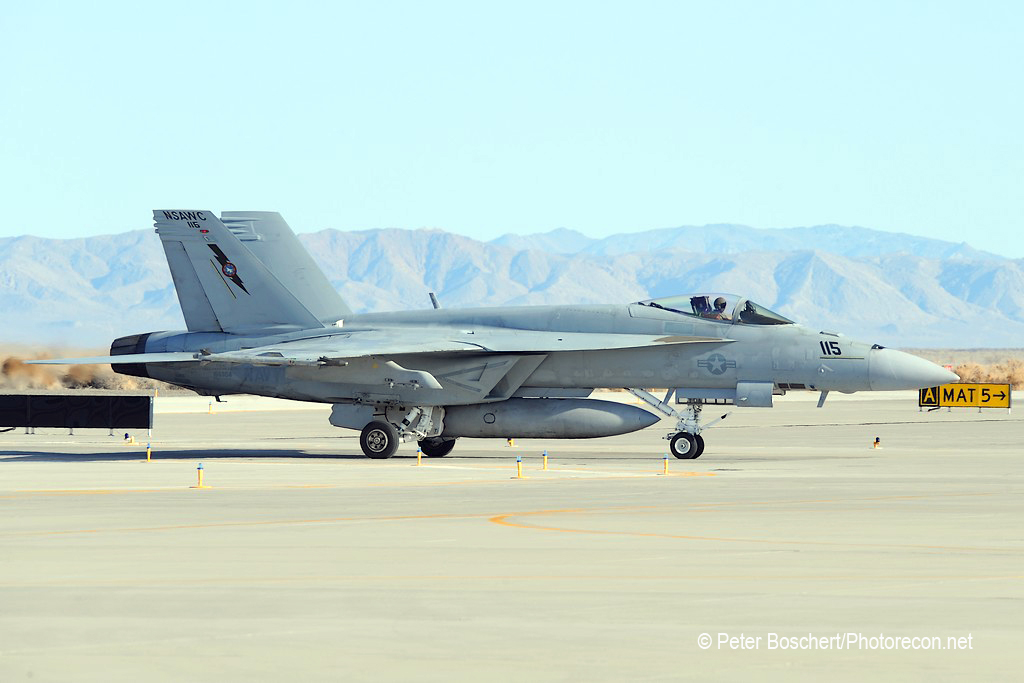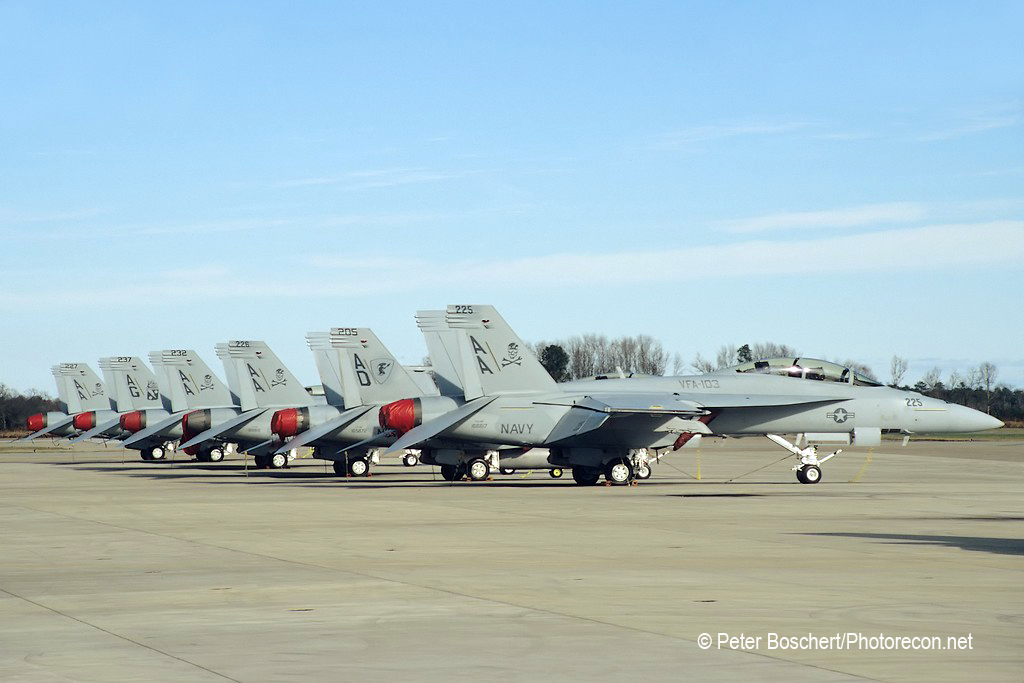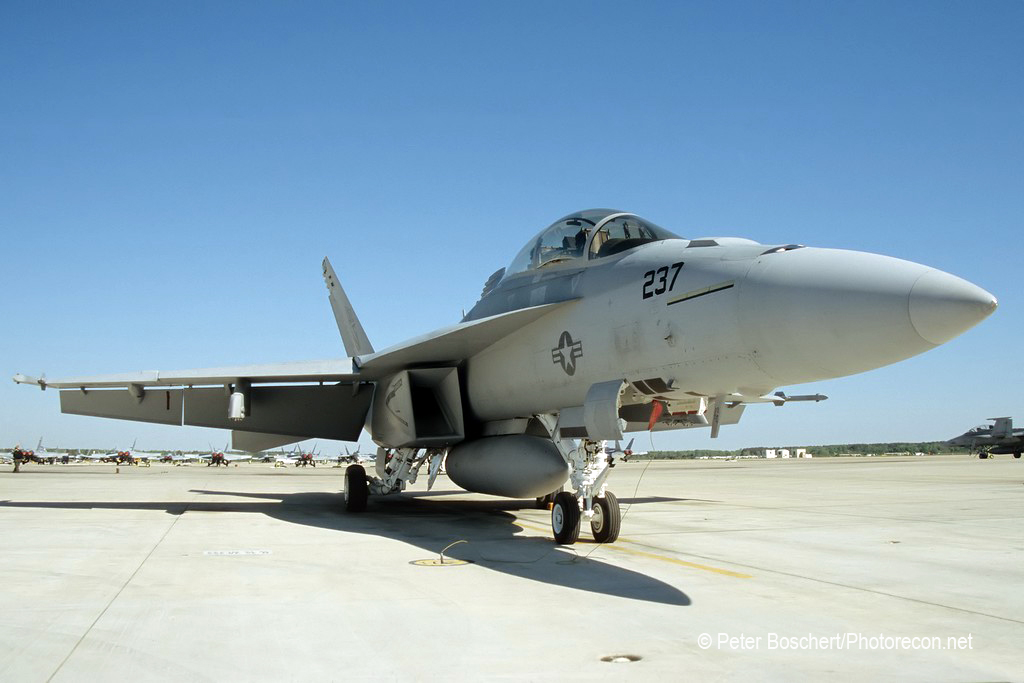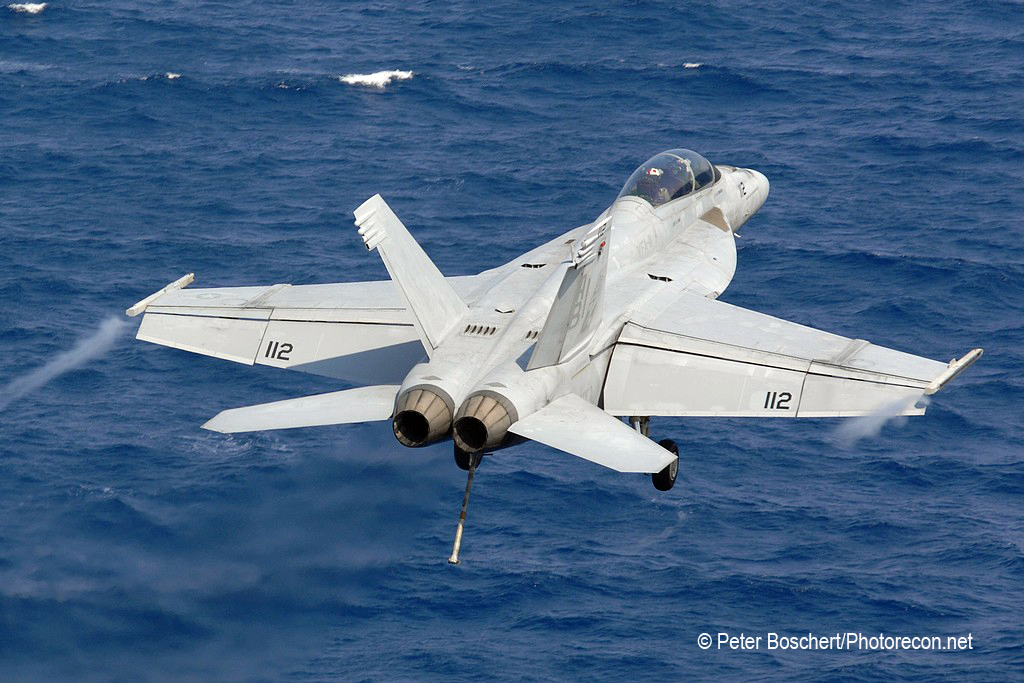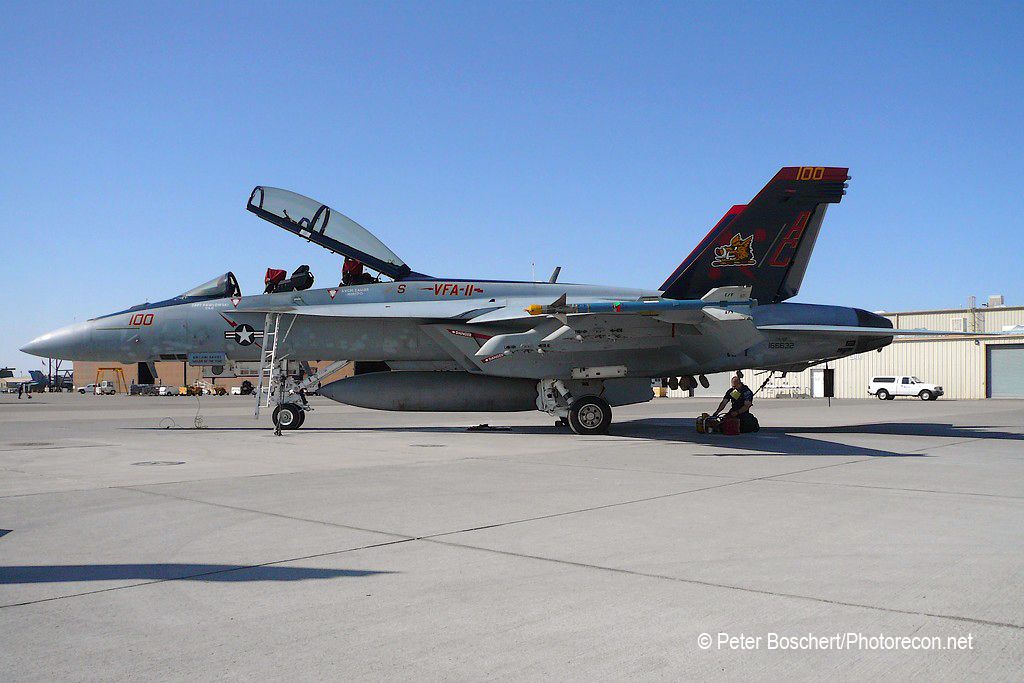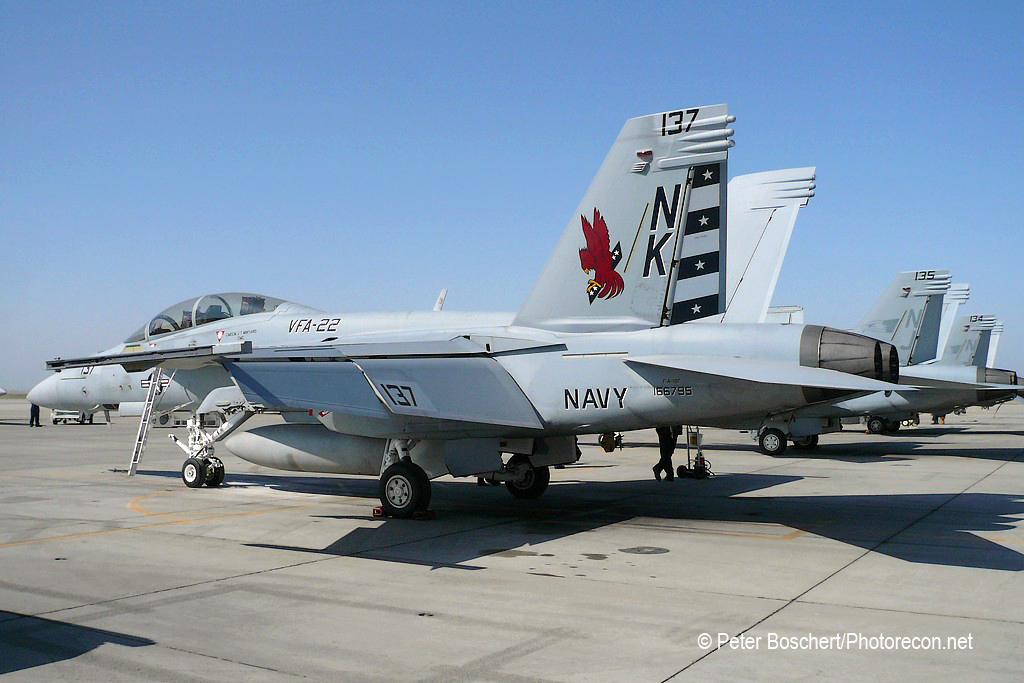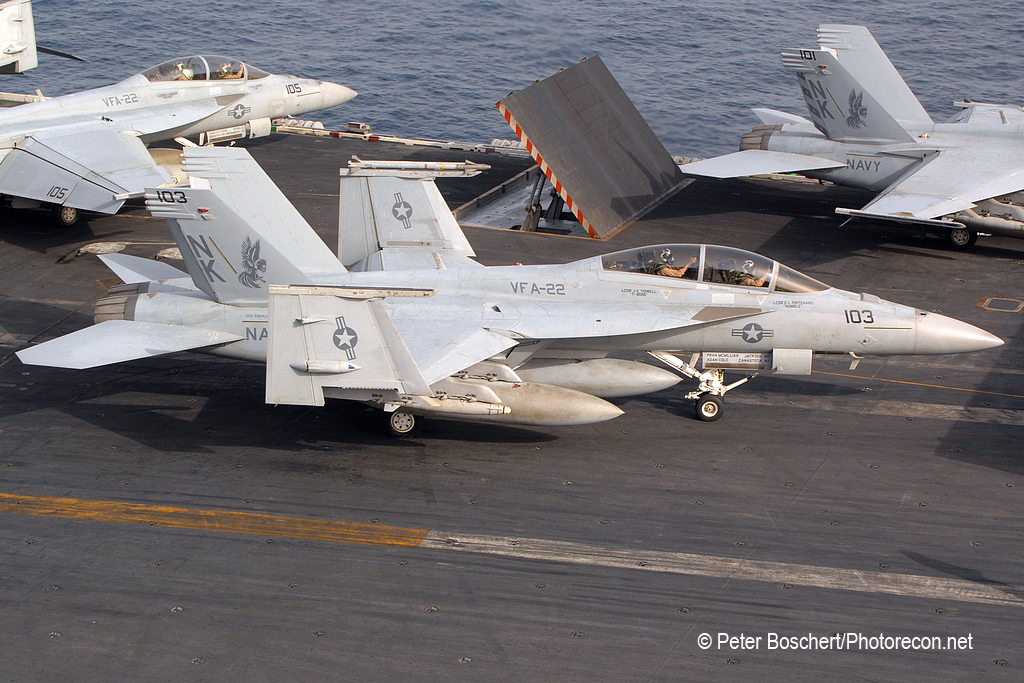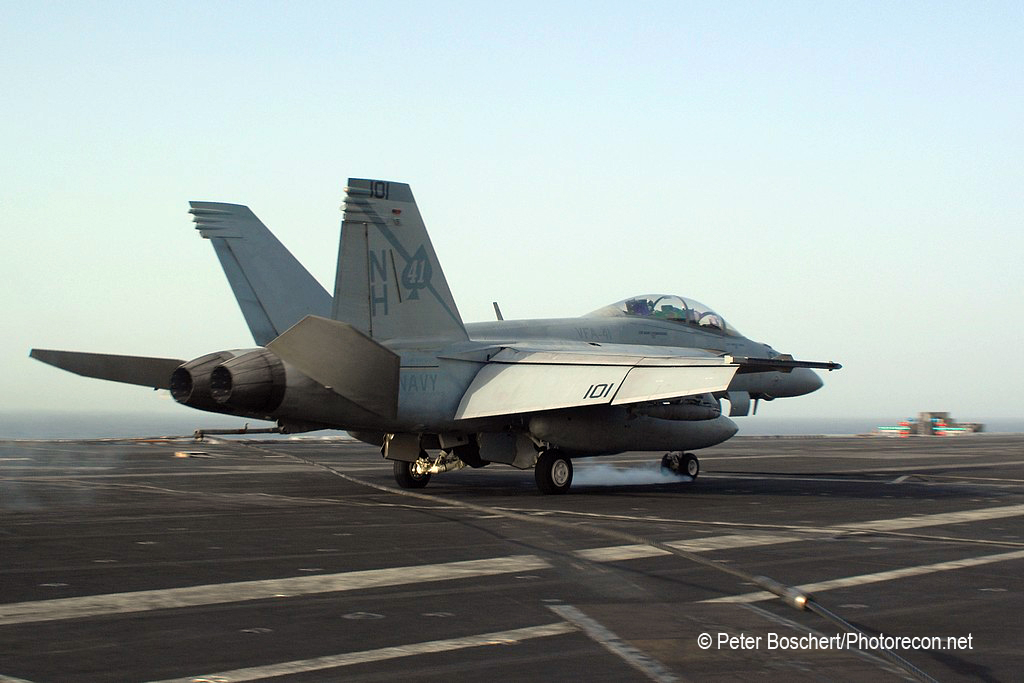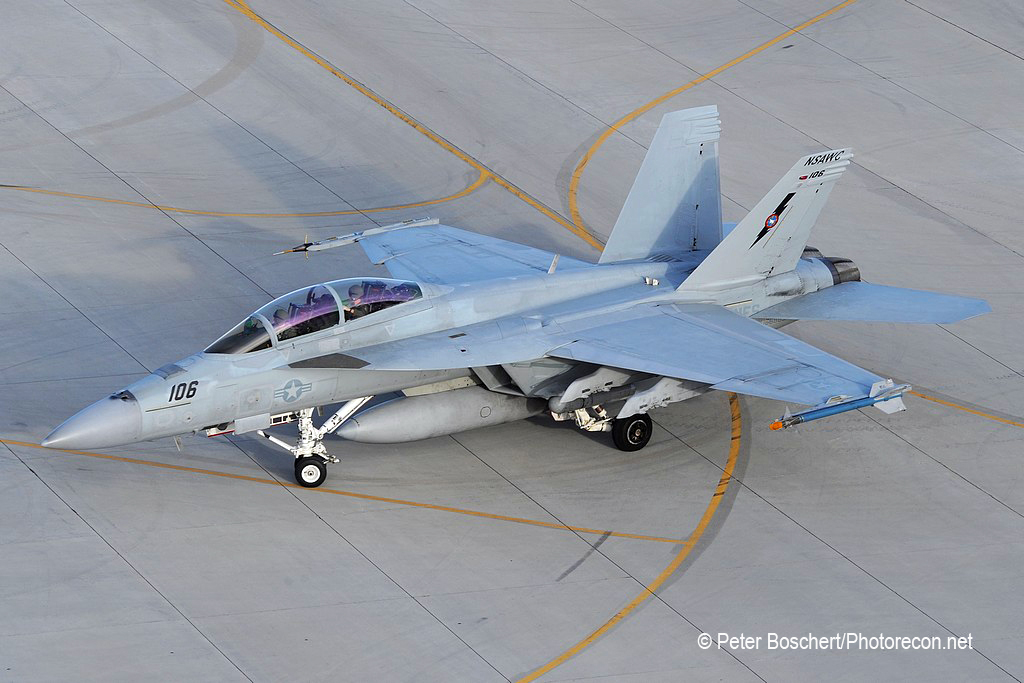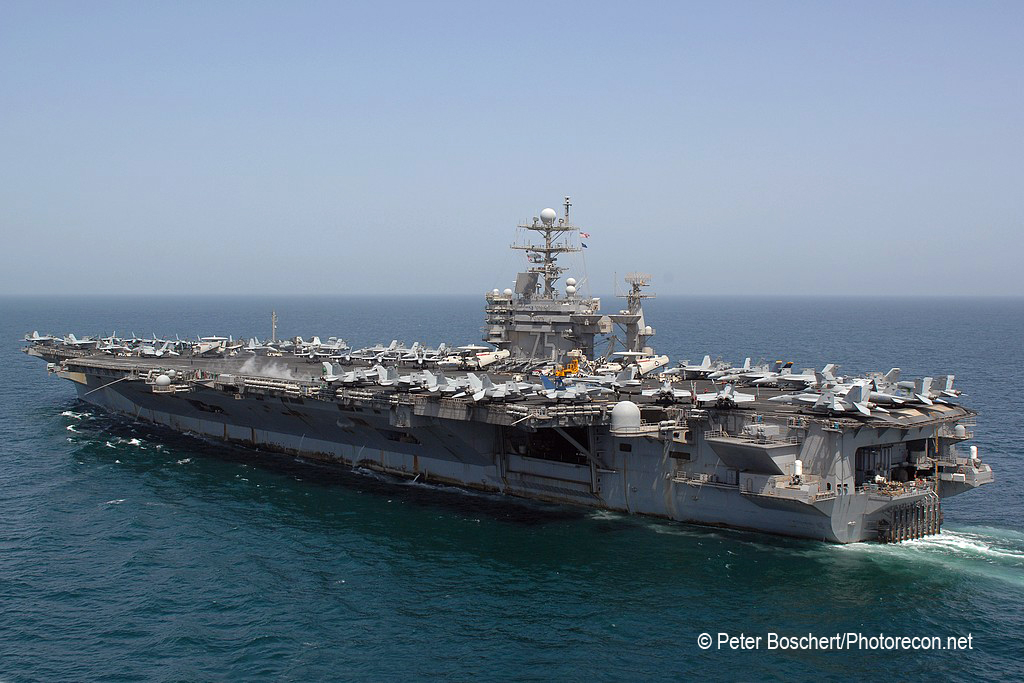Super Hornets!

This is Part 3 of a multi-part history of the McDonnell Douglas/Boeing F/A-18 Hornet/Super Hornet… more to come next month!
The US Navy then looked for an actual successor to the aged Grumman F-14 Tomcat, and in 1992 It placed an order with McDonnel Douglas for the construction of seven pre-production aircraft. The first Boeing F/A-18E Super Hornet left the factory in St. Louis on September 19, 1995. The first flight was in November 1995 and the first mission machine was delivered to the US Navy in November 1999. At first, only the Tomcat squadrons should be equipped with the Super Hornet. During this phase, McDonnel Douglas merged with Boeing and from then on called the Super Hornet Boeing F/A-18E/ F Super Hornet.

General
With the Super Hornet, Boeing has managed to deliver a very straightforward and safe plane, ordering a total of 515 Super Hornets and 153 Growlers. As a multi-role combat aircraft, they are operated mainly on carriers of the US Navy. Each season has 12 fighters. There are also training teams on the west coast (NAS Lemoore) and one on the east coast of the USA (NAS Oceana).
The VFA-122 “Flying Eagles” on NAS Lemoore have about 60 Hornets available for pilot training, 225 officers, 408 crew grades are responsible for the daily routine. The VFA-106 “Gladiators” at NAS Oceana on the east coast have about 90 Hornets in all variations for training; the Gladiators have a permanent Detachment in Key West, Florida which is always in flight because of the better weather. NAS Fallon and El Centro see many Super Hornet sorties, where aircraft are constantly deployed for training in the fine flying weather. Both squadrons also provide the US Navy Super Hornet Demo Teams at weekend Air Shows with a pair of Super Hornets each. Recently, there were around 20 annual events where the US Navy shows their skills to spectators, but the demos are usually flown on the East Coast by F/A-18E/Super Hornets, but they have been flown by the now-retired F /A-18C Legacy Hornets.
In the training squadrons, a new course for pilots and weapon system officers lasting 9 months begins every 6 weeks. The pilots and WSO learn the basics of air-to-air and air-to-ground missions. The conclusion is the qualification for day and night landings on aircraft carriers. To date, 14 Super Hornets have been lost due to aircraft accidents, a very healthy result for operation in 15 years. 500 Super Hornets / Growlers have been delivered so far (as of 2/2015). The Super Hornet has basically replaced the F-14 Tomcat in the Navy which had a significant bad record. In addition, the flight hours of the Tomcats have cost at the end about $ 14000, the Super Hornet cost about $ 7500, while the Navy has a new aircraft with the latest technology. While the Super Hornet does not have the thrust and speed of the F-14D, they’re more than a step further in terms of maintenance.

The Super Hornet had been calculated for a lifetime of 20 years and 100 carrier landings a year, but unfortunately these numbers are outdated and are forcing the US to take a number of measures to keep its Hornets airworthy. The Super Hornet has an estimated lifetime of 9170 flight hours or around 20 years. As of January 30, 2013, Super Hornet aircraft have completed over 1.1 million flight hours.
Since 2003, the Super Hornets (from Block II Lot 26) with the new ACS cockpit with a second display to operate the new radar shipped, but still with the old APG -73. The aircraft are visually distinguished by a higher rear cockpit. The Super Hornetss shipped so far will all be upgraded to the new Raytheon AN / APG-79 (AESA) radar over time. The Navy has shopped at for Raytheon 400 radars.

The latest version of the Super Hornet has a slightly different heat exchanger on the fuselage between the two vertical stabilizers! This serves for the outlet of the heated air of the Air-Conditioned. At the time, the VFA-213 and VFA-143 were the first to receive this latest variant of the FA-18, which already uses the new APG-79 radar (as of 2008).
As of January 30, 2013, Super Hornet have flown over 1,131,122 hours. VFA-115 “Eagles” was the first Super Hornet squadron to be converted to this aircraft and received operational readiness in September 2001. It was followed by VFA-14 and VFA-41 which moved from NAS Oceana on the east coast to NAS Lemoore on the west coast. In November 2002, the Super Hornets received their baptism of fire, at the “Operation Southern Watch” flew two FA-18E of the VFA-115 and were tracked in Al Kut / Iraq by ground-to-air missiles from an air defense command and control bunker Tallil Air Base came. The bunker was destroyed with a 910KG JDAM. Throughout the conflict, the F / A-18 Hornets flew 4,551 missions, ten machines were damaged (so that they could be repaired) and two were shot down. Basically, the F / A-18 Hornets were involved in every major US military operation. In addition came the missions of the Hornets of friendly countries like Canada or Australia. They flew aerial reconnaissance, airspace surveillance, attacks from ground targets and maintaining air superiority during these conflicts:
Operation Southern Watch / No-fly zone in Iraq, south of the 33rd parallel
Kosovo War
Iraq War
Operation Enduring Freedom / Afghanistan

The VFA-22 “Redcocks began operating F/A-18E Super Hornets after retiring their F / A-18C Hornets on their last cruise on the Carl Vinson at CVW-9 (January 2003-September 2003). In July 2004, the “Redcocks” of the McDonnel Douglas F / A-18C Hornet converted to the Boeing F / A-18E Super Hornet. In January 2006, the “Redcocks” switched to CVW-14 on the USS Ronald Reagan and went on a 6-month cruise in the Persian Gulf (Global War on Terrorism). On their return, the squadron’s mission profile changed and they upgraded to the Boeing F / A-18F Super Hornet and went with a mixed squad with E and F on the next cruise (from 27.01.2007 to 20.04.2007). Upon their return, the last F / A-18E was abandoned and replaced by the two-seater. In May 2008 they went for the first time with their fairly new F / A-18F Super Hornets into the North Arabian Sea where I visited them on board. In late 2010, the squadron again changed the carrier wing and is still subordinate to the CVW -17 on the USSD Carl Vinson (is currently on the way back in the Persian Gulf).

The Hornet can also be refueled in flight. The filler neck is located on the front right and is extended especially for refueling . For use on aircraft carriers, the cover plate is usually unscrewed because some of these sheets have been lost in the past. During a cruise (April-September 2007) of VFA-41, the CAG-Bird of the Black Aces (166455) was badly damaged when trying to refuel another Super Hornet using a body pod. The Super Hornet was repaired within weeks of work aboard the ship, as the hose was torn off the whole neck.
In October 2006, the Atlantic Fleet with the USS Eisenhower CVN-69 (CVW-7) took off for the first time with the new Super Hornet of the VFA-103 “Jolly Rogers” and VFA-143 “Pugin Dogs”. The first mission of the Super Hornet in the Pacific Fleet was a little different, aboard the Abraham Lincoln CVN -72 (April 20.07.2002 to 06.05.2003) was a squadron Super Hornet (VFA-115 “Eagles) and the second season were still F-14D the VFA-31 Felix. The CVW-14 was on the cruise twice in this constellation, but the second time by the USS John C. Stennis CVN-74 (24.05.2004 to 01.11.2004) since the carrier wing (CVW) has changed in the meantime. The Super Hornet squadrons usually fly with an AIM-9X and full ammunition of the cannon for the air defense, GBU-12 and / or GBU-38 bombs, or in the tanker configuration, with 4 additional tanks and Bodypod!

Deployment
Squadrons that switched directly from the F-14 Tomcat to the Super Hornet
VF-2 “Bounty Hunters” July 2003 Transition from the F-14D Tomcat to the F / A-18F Super Hornet and renaming to VFA-2 (the Bounty Hunters were stationed with the Tomcats in NAS Oceana, but belonged to the Pacific fleet and are also set up in NAS Lemoore)
VF-14 “Tophatters” Late 2001 Transition from the F-14A Tomcat to the F / A-18E Super Hornet and move from NAS Oceana to the West Coast to NAS Lemoore and renamed VFA-14 VF-31 “Tomcatters” November 2006 Transition from the F-14D Tomcat to the F / A-18E Super Hornet and renaming to VFA-31 VF-32 “Swordsmen” October 2005 Transition from the F-14B Tomcat to the F / A-18F Super Hornet and renaming to VFA-32 VF-41 “Black Aces” Late 2001 Transition from the F-14A Tomcat to the F / A-18F Super Hornet and move from NAS Oceana to the West Coast to NAS Lemoore and renamed VFA-41 VF-102 “Diamondbacks” August 2002 Transition from the F-14B Tomcat to the F / A-18F Super Hornet and renaming to VFA-102, transfer of NAS Oceana to NAS Lemoore to the West Coast and then to the 5th Fleet to Japan where it is still part of the CVW-5 today

VF-103 “Jolly Rogers” January 2005 Transition from the F-14B Tomcat to the F / A-18F Super Hornet and renaming it VFA-103 VF-143 “Pukin ‘Dogs” October 2005 Transition from the F-14B Tomcat to the F / A-18E Super Hornet and renaming it VFA-143 VF-154 “Black Knights” September 2003 Relocation of the CVW-5 in Japan to the NAS Lemoore on the west coast and transition from the F-14A Tomcat to the F / A-18F Super Hornet and renaming to VFA-154 VF-201 “Hunters” January 1999 Transition from the F-14A Tomcat to the F / A-18A Hornet and renaming it VFA-201, deactivating the squadron in March 2007 VF-211 “Fighting Checkmates” October 2004 Transition from the F-14A Tomcat to the F / A-18F Super Hornet and renaming to VFA-211 VF-213 “Black Lions” April 2006 Transition from the F-14D Tomcat to the F / A-18F Super Hornet and renaming it VFA-213 VX-4 “The Evaluators” on the NAS Point Mugu was renamed VX-9 in September 1994, the airmen got only a new number VX-9 “The Evaluators” December 2004 Transition of various F-14 Tomcat variants to the F / A-18 Super Hornet NSAWC NAS Fallon In 2003, the last F-14A Tomcats of the Aggressor squadron were replaced with F/A-18s.

The squadrons of the Pacific Fleet at NAS Lemoore
VFA-2 “Bounty Hunters” (F / A-18F) CVW-2 NE CVN-70
VFA-14 “Tophatters” (F / A-18E) CVW-9 NG CVN-74
VFA-22 “Fighting Redcocks” (F / A-18F) CVW-17 NA CVN-71
VF-25 “Fist of the Fleet” (F / A-18E)
VFA-27 “Royal Maces” (F / A-18E)
VFA-34 “Blue Blasters” (F / A-18E) CVW-2 NE CVN-70
VFA-41 “Black Aces” (F / A-18F) CVW-9 NG CVN-74
VFA-86 “Sidewinders” (F / A-18E) CVW-3 AC CVN-69
VFA-94 “Mighty Shrikes” (F / A-18F) CVW-17 NA CVN-71
VFA-97 “Warhawks” (F / A-18E) CVW-9 NG CVN-74
VFA-102 “Diamondbacks” (F / A-18F)
VFA-113 “Stingers” (F / A-18E) CVW-17 NA CVN-71
VFA-115 “Eagles” (F / A-18E)
VFA-122 “Flying Eagles”
VFA-136 “Knighthawks” (F / A-18E) CVW-1 AB CVN-75
VFA-137 “Kestrels” (F / A-18E) CVW-2 NE CVN-70
VFA-146 “Blue Diamonds” (F / A-18E) CVW-11 NH CVN-68
VFA-147 “Argonauts” (F / A-18E) CVW-11 NH CVN-68
VFA-151 “Vigilantes” (F / A-18E) CVW-9 NG CVN-74
VFA-154 “Black Knights” (F / A-18F) CVW-11 NH CVN-68
VFA-192 “Golden Dragons” (F / A-18E) CVW-2 NE CVN-70
VFA-195 “Dambusters” (F / A-18E)

The squadrons of the Atlantic Fleet NAS Oceana
VFA-11 “Red Rippers” (F / A-18F) CVW-1 AB CVN-75
VFA-31 “Tomcatters” (F / A-18E) CVW-8 AJ CVN-77
VFA-32 “Swordsmen” (F / A-18F) CVW-3 AC CVN-69
VFA-34 Blue Blasters (F / A-18E)
VFA-37 “Ragin Bulls” (F / A-18F)
VFA-81 “Sunliners” (F / A-18E) CVW-1 AB CVN-75
VFA-83 “Rampagers” (F / A-18E)
VFA-87 “Golden Warriors” (F / A-18E) CVW-8 AJ CVN-77
VFA-103 “Jolly Rogers” (F / A-18F)
VFA-105 “Gunslingers” (F / A-18E) CVW-3 AC CVN-69
VFA-106 “Gladiators” (Fleet Replacement Squadron, operates F / A-18A / B / C / D / E / F)
VFA-131 “Wildcats” (F / A-18E) CVW-8 AJ CVN-77
VFA-143 “Pukin ‘Dogs” (F / A-18E)
VFA-211 “Fighting Checkmates” (F / A-18F) CVW-1 AB CVN-75
VFA-213 “Black Lions” (F / A-18F) CVW-8 AJ CVN-77
The Carrier Wings exchange their squadron again and again, so the above is the date of today (September 2018). The squadrons without CVW are currently not assigned to a carrier. The first cruise with the F-35C is scheduled for the year 2021 on the USS Carl Vinson CVN-70.

Super Hornets Block II
In this upgrade, especially the avionics was extensively modernized. The AN / APG-73 radar is replaced by the much more powerful AN / APG-79. It is based on AESA technology, which has significantly better range, reliability, ECCM and multiple targeting compared to conventional radars. It has a total of 1100 transmitters and has LPI features. Compared to a radar cross-section (RCS) target of one square meter, it achieves a range of about 125 km. Of the total planned 552 Super Hornets 415 pieces are to be equipped with this radar, with Block I machines are retrofitted accordingly. The defensive EloKa capacities have also been considerably expanded. The improved (V) 3 version of the AN / ALR-67 radar warning device is now used in combination with the new AN / ALQ-214 EloGM system, which incorporates the new AN / ALE-50 or -55 tow luff , Furthermore, the newly developed target acquisition and target light box AN / ASQ-228 Advanced Targeting Forward-Looking Infrared (ATFLIR) can now also be used.
Aerial reconnaissance is available to the Raytheon SHAred Reconnaissance Pod (SHARP) reconnaissance vessel, which can display the captured image data either directly in the cockpit or digitally stored and sent via radio to a ground station. Also in the cockpit area modifications were made. The rear cockpit of the Weapons System Officer (WSO) has been redesigned to include a 20×25 cm tactical display screen. In order to achieve better performance in close combat, the pilot and the WSO get the new JHMCS helmet. New processors have also been added and many network connections are now made using fiber optic cables. The first Block II machine was delivered on April 21, 2005, and by early 2007, this number had increased to eleven per month. In the future, a dedicated IRST infrared system will be used to better capture air targets, with Lockheed Martin receiving a production order for more than 150 units on July 2, 2007. The entire system is integrated into the top of a 440-gallon dump tank, reducing its capacity to 330 gallons (~ 1250 liters). Over time, General Electric introduced several enhancements to the F414 engines. The Enhanced Durability Engine (EDE), Enhanced Performance Engine (EPE) and Increased Performance Engine (IPE) versions are major modifications, with only the EPE version being developed for series production. This has been available for retrofitting since the beginning of 2009 and achieves up to 118.36 kN thrust (with afterburning).
Super Hornets Block III
The Block III modernization is basically in progress since 2008 and it would like to reduce the radar signal by 50 percent to have better camouflage characteristics, less fuel consumption, modern avionics, and intelligent weapons. Conformal tanks to hang more weapons to the wing outer stations. In addition, one works on more thrust engines.
Thank yous and acknowledgements!
Special thanks to the PAOs of NAS Oceana (visits 1998-2007), Troy Snead, NAS Fallon (visits 1993-2015), Zip Upham, NAS Lemoore (visits 2005-2008), and Dennis McGrath. Additionally, thanks to the PAOs CVN-68 USS Nimitz (2007 and 2009), CVN-69 USS Dwight D. Eisenhower (visits 2006), CVN-71 USS Theodore Roosevelt (visits 2005 and 2009), CVN-75 USS Harry S. Truman (visit 2010) CVN-76 USS Ronald Reagan (2008 Ron Flanders visit) and CVN-77 George HW Bush (Visit 2011), plus the Nellis AFB PAO, Luke AFB PAO, and Matthew Clements (for the pictures F / A-18E / F VX-23 and USNTPS).
Here’s a Super Slide Show of some Super Hornets…


